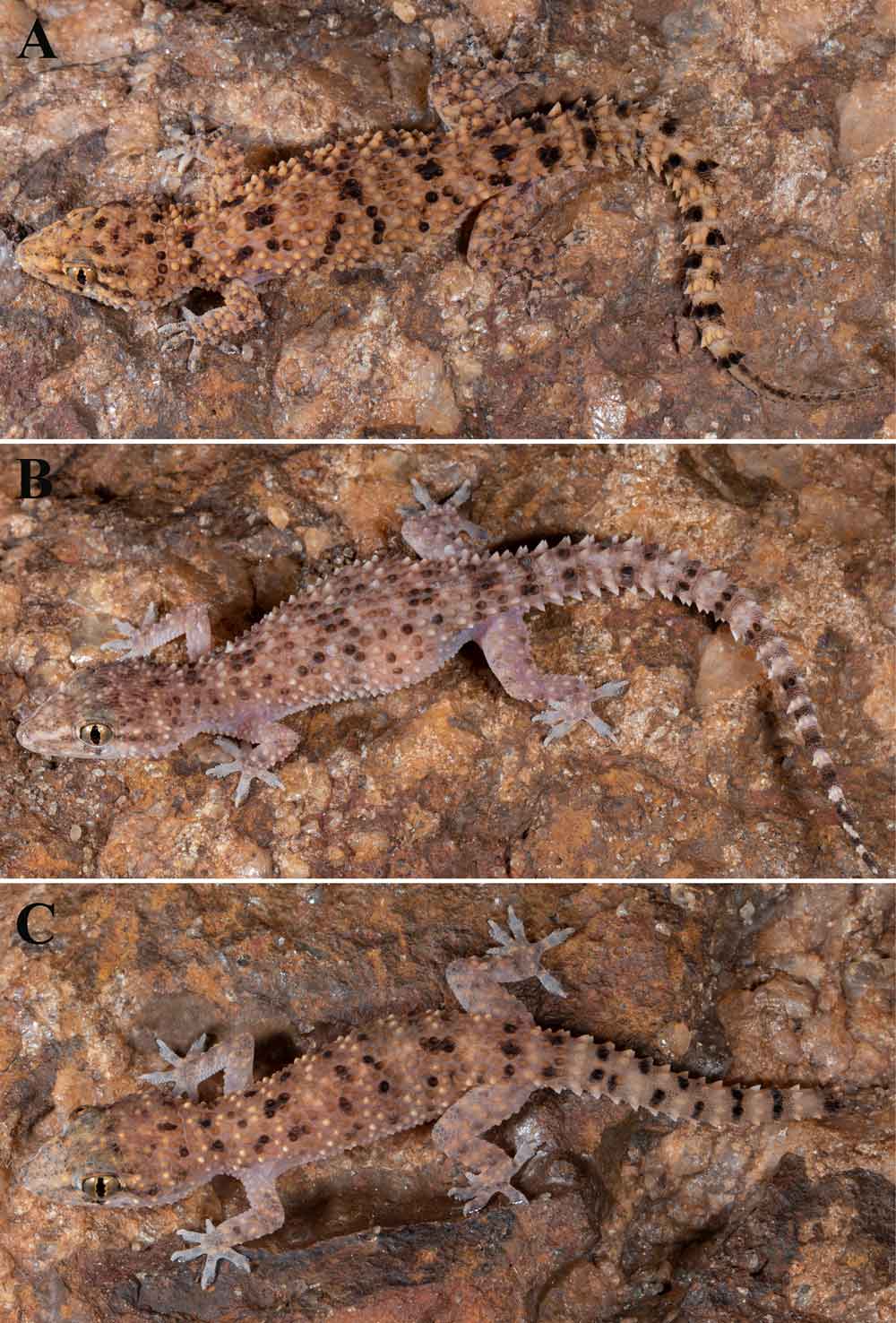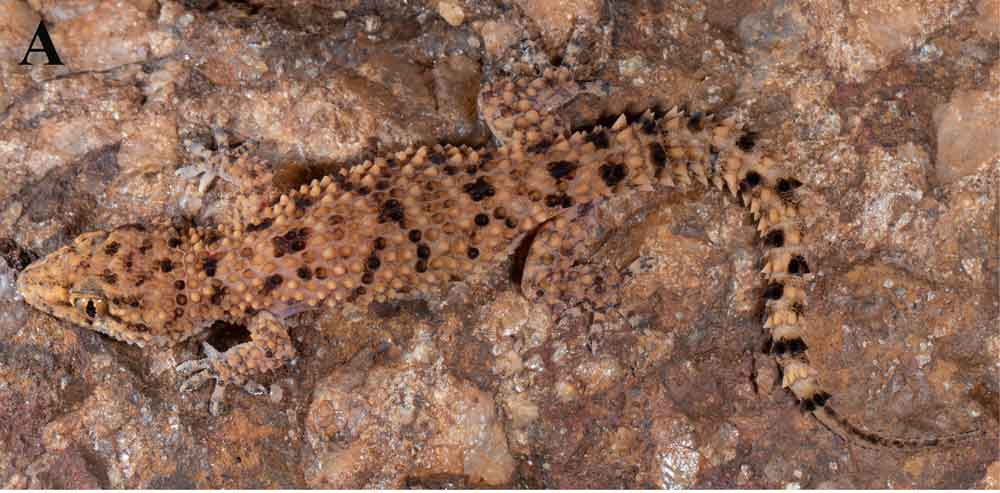While Hemidactylus quartziticolus is its scientific name, it is suggested that its common names be Quartzite brookiish gecko or Thoothukudi brookiish gecko.
Researchers have discovered and described a new species of Hemidactylus lizard from the Thoothukudi District, Tamil Nadu in India. The lizard is notable because, according to the researchers, it features the most densely packed tubercles of all Indian Hemidactylus lizards.
The new species, Hemidactylus quartziticolus sp. nov. is only known to occur in two low, quartzite hillocks that are 45 km away from each other, residing in scrubby thorn forests and loose and stony soil, according to the paper describing the species. While Hemidactylus quartziticolus is its scientific name, it is suggested that its common names be Quartzite brookiish gecko or Thoothukudi brookiish gecko.

Hemidactylus quartziticolus sp. nov. in life: A male, holotype NRC-AA-1256, B female, paratype NRC-AA-1264, and C uncollected juvenile. Photos by Akshay Khandekar.
The lizard is a small-sized Hemidactylus with a snout to vent length of less than 57mm. It is covered from head to the beginning of the tail in tubercles, including the front and rear legs. The tail features spike like protrusions starting from the beginning of the tail to the tip. The gecko is brown in coloration with streaks that appear anterior to the eye. The head, body and tail feature black blotches with x shaped markings that occur through the spots across the center of the back and anterior hindlimbs.
The complete paper, “A remarkable new species of gecko (Squamata: Gekkonidae: Hemidactylus) from scrublands at the southern tip of India” can be read on the Vertebrate Zoology website.



